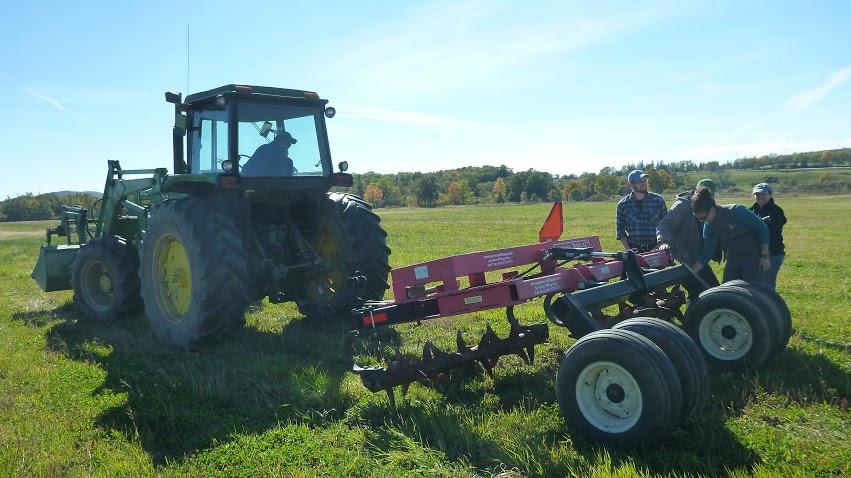Your cart is currently empty!
Aerator
Aerator
Aerator use is considered a form of Conservation Tillage, Best Management Practice — practices that keep crop and plant residues on the soil to prevent erosion and runoff.
- An aerator creates a vertical slit in the soil that opens up the soil for better water and nutrient infiltration and decreases compaction at the surface, at least on a temporary basis.
- An aerator can break down thatch, a common cause of runoff in dairy pastures.
Benefits
Potential to Improve Soil Health : Healthy soils absorb water and nutrients and produce higher quality feed and crops. Aeration has been used to restore soil to a healthier balance of mineral soil, organic matter, air and water.
Potential to Reduce Compaction: Compaction makes both wet and dry conditions more severe and increases runoff.
Potential to Improve Water Quality from Field Runoff: The aerator increases infiltration into the soil, decreases compaction of the soil and prevents excess nutrient runoff. The aerator leaves crop residue on the surface of the soil, retaining organic matter and preventing soil erosion.
To read more download our educational factsheet: Soil Aerator Factsheet
Aeration Resources
https://www.no-tillfarmer.com/articles/2064-manure-injection-in-no-til-and-pasture-systems
W-Laura DiPietro-Literature review of Selected Agricultural BMPs-1-31-2015
AAFM AGO Study Report_final_DRAFT
 This webpage and scientific research were part of a grant from NESARE to the WNRCD to conduct ongoing research into the effectiveness of the BMP of soil aeration and to create outreach materials. The WNRCD thanks NESARE for making this valuable work possible.
This webpage and scientific research were part of a grant from NESARE to the WNRCD to conduct ongoing research into the effectiveness of the BMP of soil aeration and to create outreach materials. The WNRCD thanks NESARE for making this valuable work possible.

